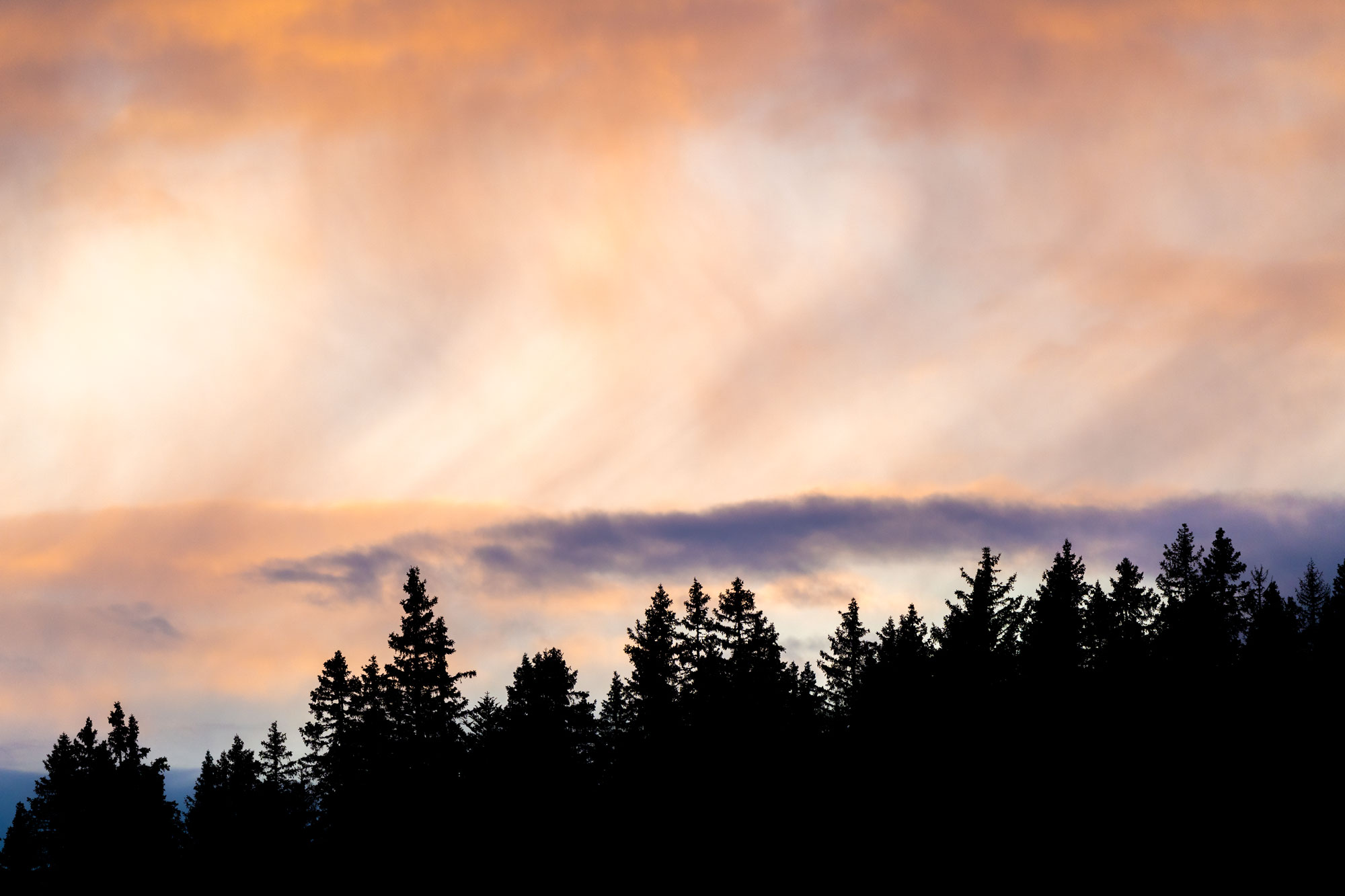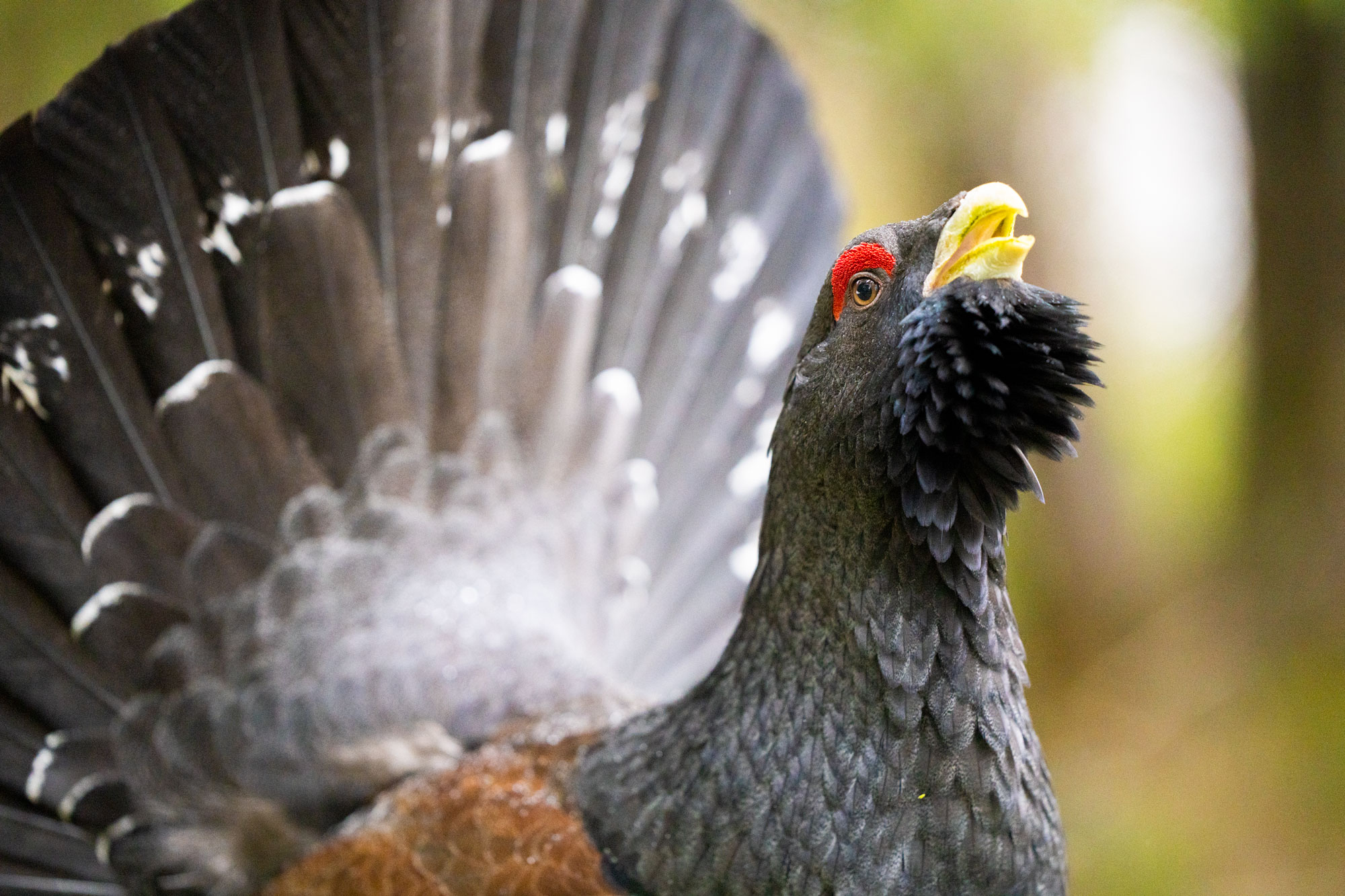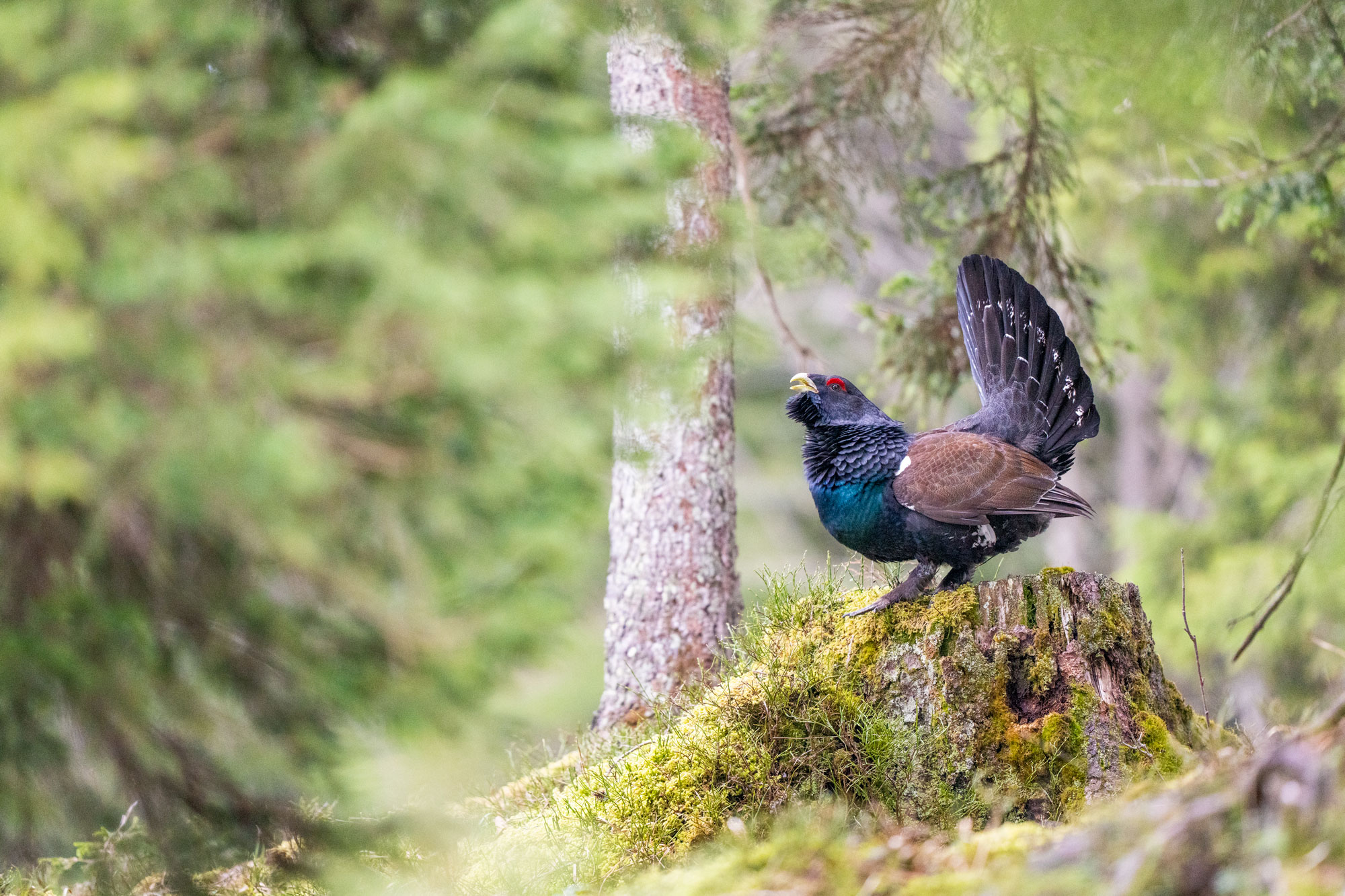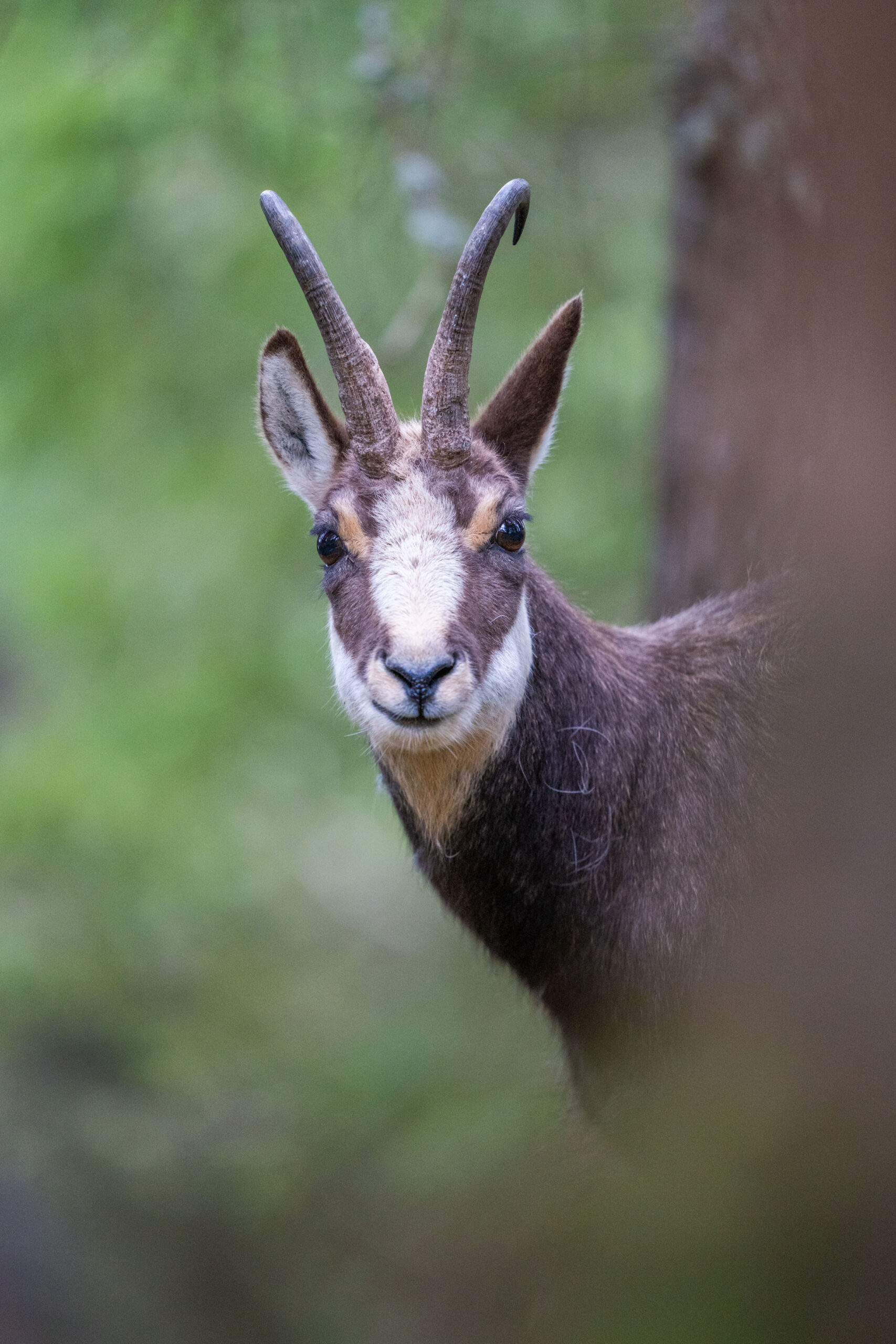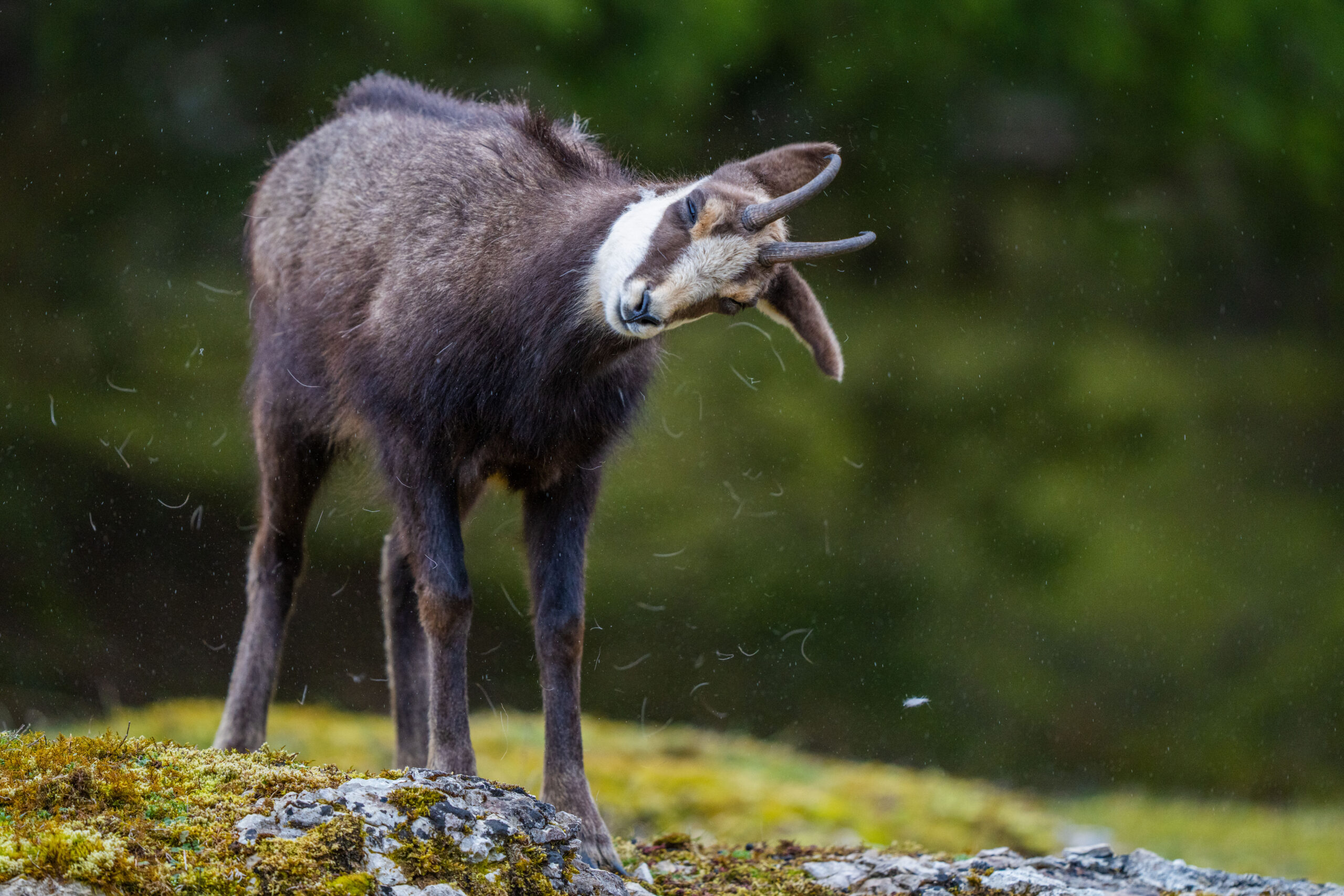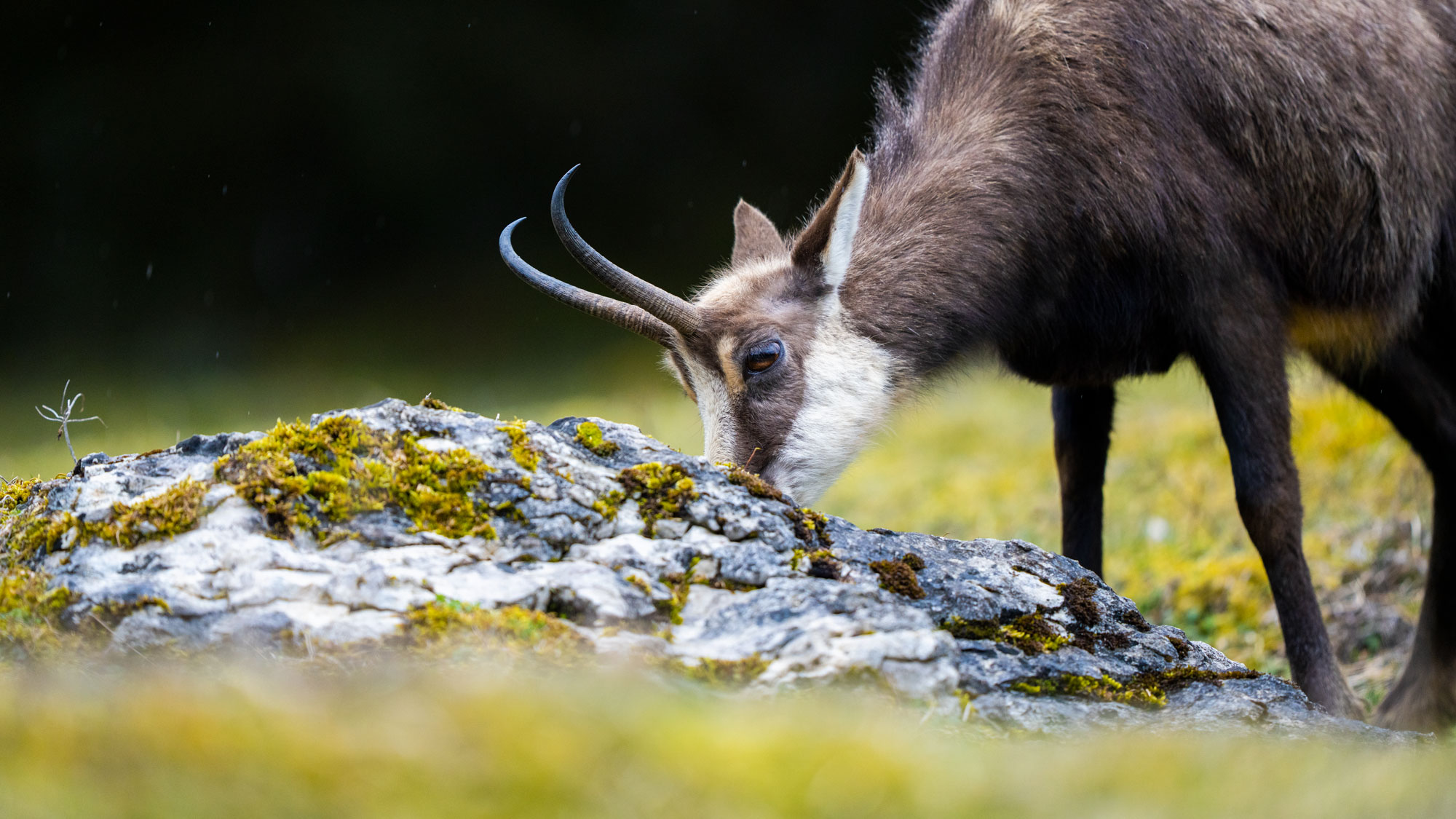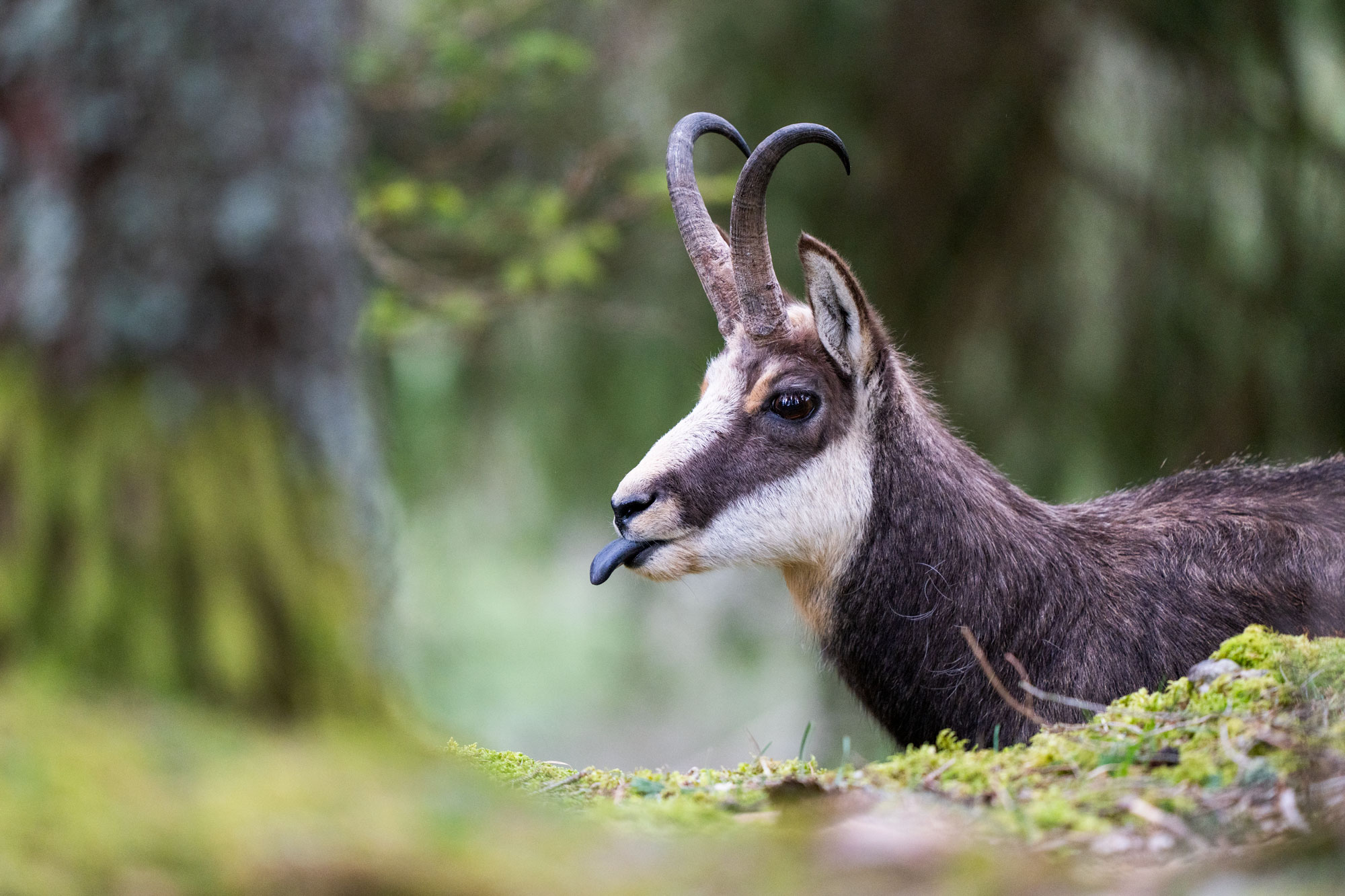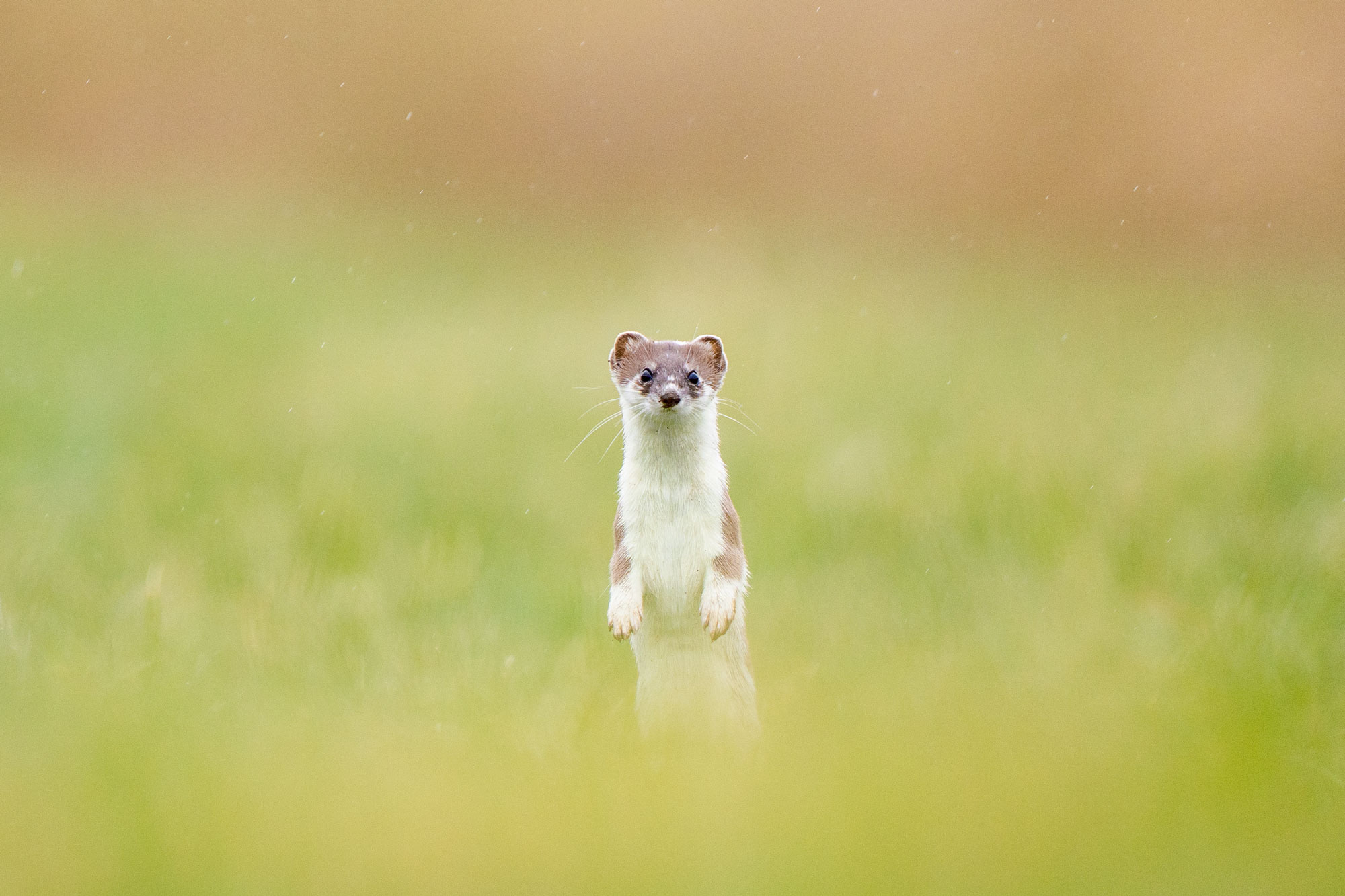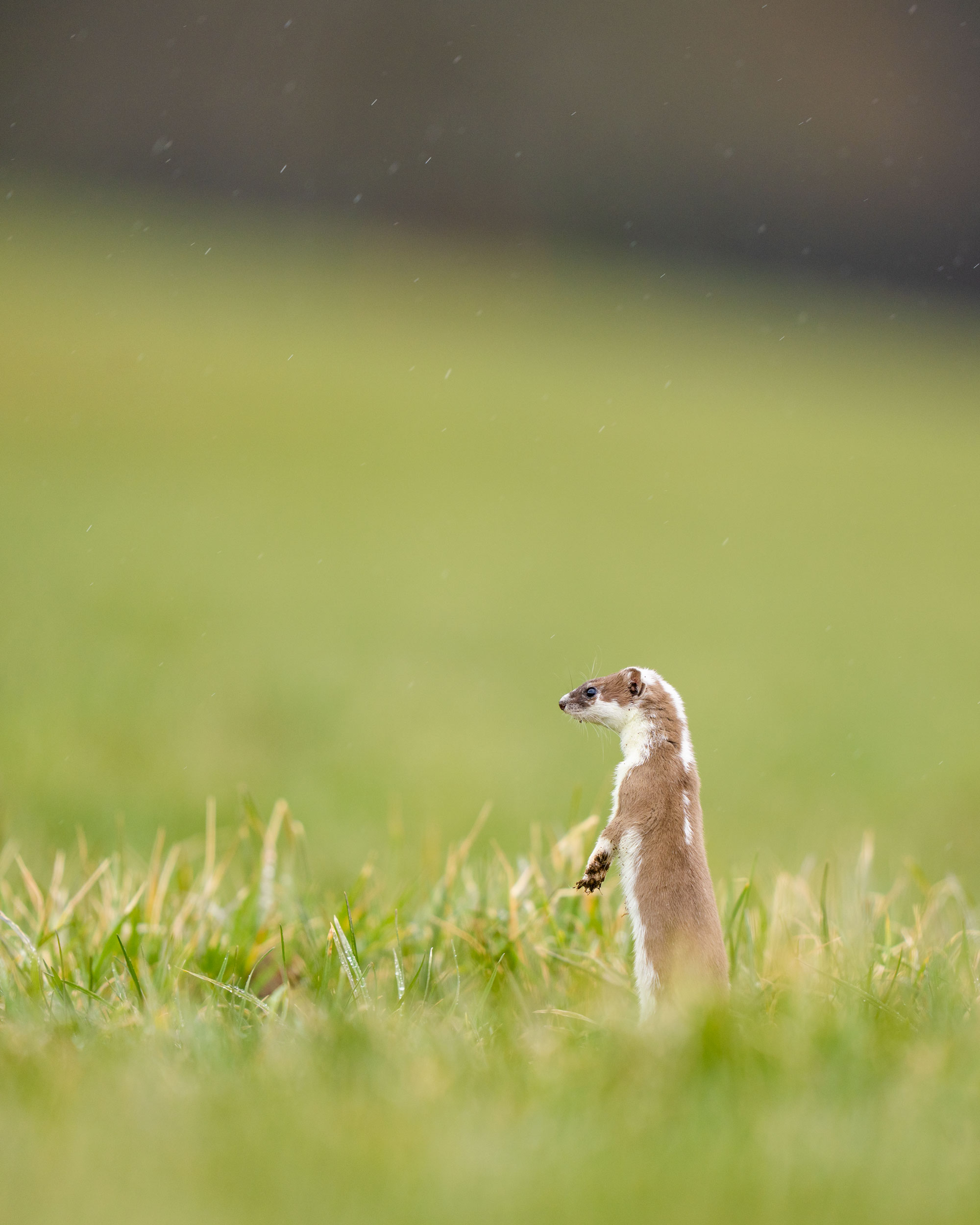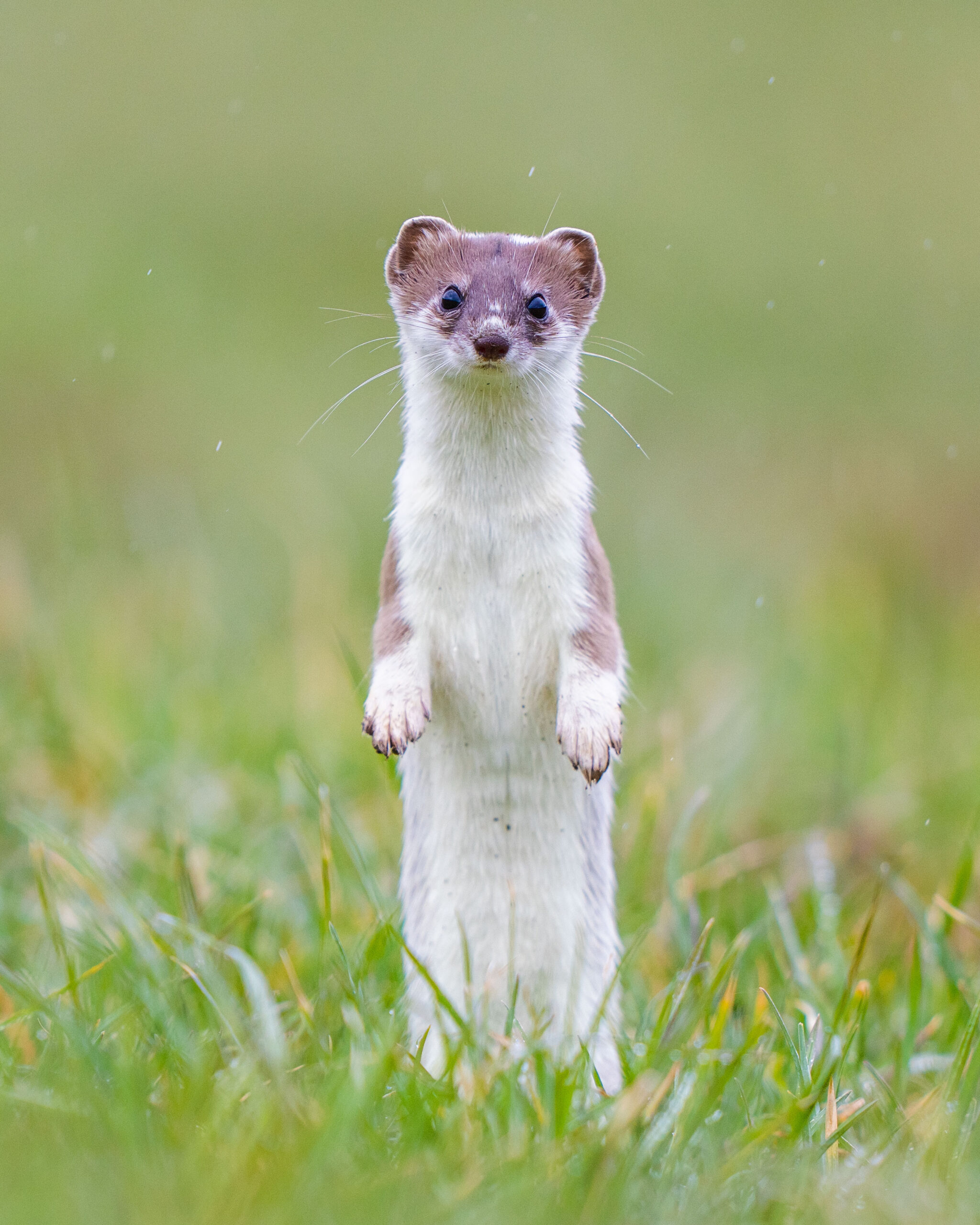Three days in the Swiss forests
In mid-March, I found a long weekend where I could switch off completely and immerse myself in the Swiss forests. I took a six-hour train journey to the Jura to really get away from my surroundings. I set off with my "Mätteli", sleeping bag and photographic equipment and spent three nights, sometimes under a starry sky in the company of a hoot owl and sometimes in the splashing of the rain. In addition to some wonderful atmospheres, I also discovered one or two wild animals. The absolute highlight was watching and photographing a capercaillie, but I also had great experiences watching the wood chamois and a nimble stoat.
Capercaillie (Tetrao urogallus)
As a highlight, I was able to photograph this capercaillie. The impressive capercaillies live secretly and hidden in sparse forests. Their high demands for pristine forests with open clearings, lots of dead wood and little disturbance are their undoing. Because these forests are becoming rarer, there are only around 400 capercaillies left in the most remote Swiss forests. Complex habitat improvement projects and strict wildlife rest areas are attempts to stabilise the capercaillie population.
Chamois (Rupicapra rupicapra)
On the second day, I spotted a group of wood chamois. The group let me get surprisingly close and I was able to stay side by side with them for a few hours. Chamois have become etched in our minds as high alpine mountain specialists. In recent decades, however, the so-called "forest chamois" have become increasingly common and have learnt to use the forest as a habitat. The reasons for this shift in habitat are probably the disturbance caused by tourism above the tree line and the long absence of large carnivores in the Swiss forests.
Stoat (Mustela erminea)
I had already tried to photograph the agile stoats several times without success. In addition to the camera's fast autofocus, you also need a bit of luck with timing. Stoats have a rhythm in which they hunt on the surface for around thirty minutes before disappearing underground for at least three hours. So if you spot a stoat, you never know how much of the thirty minutes has already passed. This time, however, luck was on my side. After spotting the stoat, I lay down at the edge of the meadow. Over the next half hour, the stoat came within photo distance several times and I managed to take one or two pictures.
The three days flew by and were a great balance to my everyday work, where I am currently in the middle of preparing for the final exams of my apprenticeship. My next plans are to spend a few days in Graubünden during the spring holidays - a short blog on this should follow at the end of April. Until then, it's best to subscribe to the newsletter to stay up to date on current projects;)


